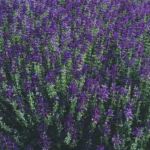
|
| Aconites |
Tuberous perennial with upright stems and mid-green leaves, to 15cm (6in) across, deeply divided into 5-7 lobes, and further toothed and lobed. Racemes of deep blue, hooded flowers appear in late summer.
For use by qualified practitioners only. Medicinal use is subject to legal restrictions in some countries. |
|
Description:Has gray white flowers. Subsp vulgare Carneum Description: Has delicate flesh-pink flowers and needs cool, rich, moist soil. |
|
The symptons of poisoning are tingling and numbness of tongue and mouth and a sensation of ants crawling over the body, nausea and vomiting with epigastric pain, laboured breathing, pulse irregular and weak, skin cold and clammy, features bloodless, giddiness, staggering, mind remains clear. A stomach tube or emetic should be used at once, 20 minims of Tincture of Digitalis given if available, stimulants should be given and if not retained diluted brandy injected per rectum, artificial respiration and friction, patient to be kept lying down. All the species contain an active poison Aconitine, one of the most formidable poisons which have yet been discovered: it exists in all parts of the plant, but especially in the root. The smallest portion of either root or leaves, when first put into the mouth, occasions burning and tingling, and a sense of numbness immediately follows its continuance. One-fiftieth grain of Aconitine will kill a sparrow in a few seconds; one-tenth grain a rabbit in five minutes. It is more powerful than prussic acid and acts with tremendous rapidity. One hundredth grain will act locally, so as to produce a well-marked sensation in any part of the body for a whole day. So acrid is the poison, that the juice applied to a wounded finger affects the whole system, not only causing pains in the limbs, but a sense of suffocation and syncope. Some species of Aconite were well known to the ancients as deadly poisons. It was said to be the invention of Hecate from the foam of Cerberus, and it was a species of Aconite that entered into the poison which the old men of the island of Ceos were condemned to drink when they became infirm and no longer of use to the State. Aconite is also supposed to have been the poison that formed the cup which Medea prepared for Theseus. Aconite causes irregular action of the heart, and Belladonna produces delirium. Aconite poisoning of wells by A. ferox has been carried out by native Indians to stop the progress of an army. They also use it for poisoning spears, darts and arrows, and for destroying tigers. All children should be warned against Aconite in gardens. It is wiser not to grow Aconite among kitchen herbs of any sort. The root has occasionally been mistaken for horse-radish, with fatal results - it is, however, shorter, darker and more fibrous - and the leaves have produced similar fatal results. In Ireland a poor woman once sprinkled powdered Aconite root over a dish of greens, and one man was killed and another seriously affected by it. In 1524 and 1526 it is recorded that two criminals, to whom the root was given as an experiment, quickly died. The older herbalists described it as venomous and deadly. Gerard says: 'There hath beene little heretofore set down concerning the virtues of the Aconite, but much might be saide of the hurts that have come thereby.' It was supposed to be an antidote against other poisons. Gerard tells us that its power was 'So forcible that the herb only thrown before the scorpion or any other venomous beast, causeth them to be without force or strength to hurt, insomuch that they cannot moove or stirre untill the herbe be taken away.' Ben Jonson, in his tragedy Sejanus, says: 'I have heard that Aconite Being timely taken hath a healing might Against the scorpion's stroke.' Linnaeus reports Aconite to be fatal to cattle and goats when they eat it fresh, but when dried it does no harm to horses, a peculiarity in common with the buttercups, to which the Aconites are related. Field-mice are well aware of its evil nature, and in hard times, when they will attack almost any plant that offers them food, they leave this severely alone. |
|